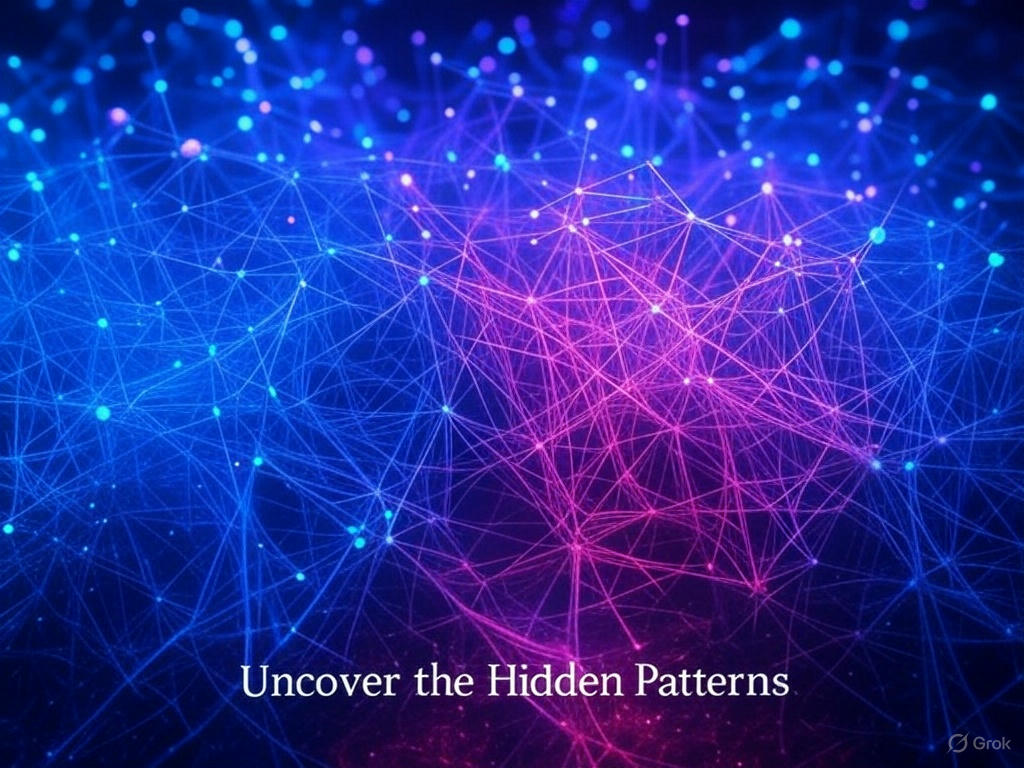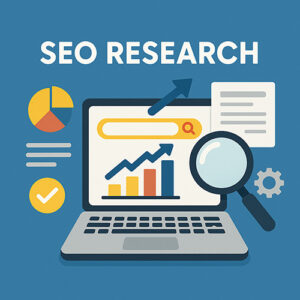The Power of Data Visualization: Transforming Numbers into Insights
Introduction
In today’s data-driven world, we’re constantly surrounded by information. Organizations collect unprecedented amounts of data about customers, operations, markets, and more. But raw data—endless rows and columns of numbers—rarely tells a compelling story on its own. This is where data visualization steps in, transforming abstract numbers into meaningful visual insights that can be quickly understood and acted upon.
Data visualization is the graphical representation of information and data. Using visual elements like charts, graphs, maps, and dashboards, data visualization tools provide an accessible way to see and understand trends, outliers, and patterns in data. In essence, it’s the bridge between data collection and data-driven decision making.
Why Data Visualization Matters
The Science Behind Visual Processing
Our brains are wired to process visual information efficiently. Consider these facts:
- The human brain processes images 60,000 times faster than text.
- 90% of information transmitted to the brain is visual.
- People remember 80% of what they see, compared to just 20% of what they read.
This biological preference for visual information makes data visualization not just helpful but essential for effective data communication.
Identifying Trends and Patterns at a Glance
One of the most powerful aspects of visualization is its ability to reveal patterns that might be invisible in raw data. For example:
Raw data example: Monthly sales figures for the past year: $32,456, $29,875, $31,245, $35,672, $38,912, $42,345, $45,678, $44,321, $40,987, $38,765, $36,543, $42,876.
Looking at these numbers, you might notice some variation, but patterns aren’t immediately obvious.
Visualized data (as a line chart): The same data visualized as a line chart immediately reveals:
- A clear upward trend from January through July
- A peak in July
- A gradual decline from August through November
- A recovery in December
This pattern of seasonal variation becomes instantly apparent in visual form, allowing for better inventory planning and marketing strategy adjustments.
Simplifying Complex Information for Better Decision-Making
Modern datasets are often multidimensional and complex. Visualization helps to simplify this complexity by:
- Reducing cognitive load – Instead of mentally processing hundreds or thousands of data points, a visualization presents the key information in a digestible format.
- Highlighting relationships – Connections between different variables become clear when visualized appropriately.
- Focusing attention – Well-designed visualizations direct viewers to the most important aspects of the data.
For instance, a supply chain manager looking at shipment delays across global distribution centers might struggle to identify problem areas from a spreadsheet with thousands of entries. A color-coded world map, however, where regions are shaded based on average delay times, immediately highlights problematic locations and allows for targeted interventions.
Enhancing Storytelling and Communication
Data isn’t just for analysts—it needs to be communicated to stakeholders across an organization and sometimes to the public. Visualization transforms abstract numbers into compelling stories:
- Making data accessible to non-technical audiences
- Creating emotional connections with information through visual storytelling
- Increasing engagement with reports and presentations
- Supporting more persuasive arguments with clear visual evidence
A nonprofit organization seeking funding might present a bar chart showing how previous donations directly translated to increased services for community members, creating a much stronger emotional impact than simply stating percentage increases.
Encouraging Exploration and Discovery
Interactive visualizations invite users to explore data themselves, leading to:
- Deeper engagement with the information
- Discovery of insights that might not have been anticipated by the original analyst
- Answering follow-up questions without needing to create new reports
- Empowering decision-makers to test their assumptions against data
For example, an interactive sales dashboard might allow executives to filter data by region, product category, or time period, enabling them to investigate performance issues and identify opportunities without requiring additional analysis from the data team.
Key Types of Data Visualizations
Different types of visualizations serve different purposes. Understanding when to use each type is crucial for effective data communication.
Charts & Graphs for Showing Relationships and Trends
Bar Charts
Best for: Comparing quantities across categories Example use: Comparing revenue across different product lines or regions
Bar charts are versatile and familiar, making them accessible to almost any audience. They work well when:
- You have categorical data (like products, regions, or departments)
- You want to show a clear ranking of values
- You need to compare several items at once
Tip: Keep bar charts simple—too many categories can become cluttered and difficult to interpret. Consider using a horizontal bar chart when you have long category names.
Line Graphs
Best for: Showing trends over time or continuous data Example use: Tracking monthly website traffic over the past year
Line graphs excel at revealing:
- Overall trends (upward, downward, cyclical patterns)
- Rate of change (through the slope of the line)
- Comparison of multiple trends (using different colored lines)
Tip: Limit the number of lines to 3-5 to avoid confusion. If you need to show more series, consider using small multiples (separate charts for each series).
Pie and Donut Charts
Best for: Showing composition or part-to-whole relationships Example use: Breaking down a company’s revenue by product category
While visually appealing, pie charts should be used sparingly and only when:
- You have a small number of categories (ideally 5 or fewer)
- The parts sum to a meaningful whole (100%)
- The differences between values are substantial
Tip: If categories have similar values or there are many categories, consider using a bar chart instead.
Scatter Plots
Best for: Showing relationships between two variables Example use: Examining the relationship between advertising spend and sales
Scatter plots are powerful for:
- Identifying correlations (positive, negative, or none)
- Spotting clusters or groups in data
- Finding outliers or unusual data points
Tip: Add trend lines to make patterns more obvious, and consider using different colors or shapes to indicate a third variable (like customer segment or geographic region).
Area Charts
Best for: Showing cumulative totals over time Example use: Displaying the growth of a company’s user base, broken down by subscription tier
Area charts are effective for:
- Showing how parts contribute to a whole over time
- Emphasizing the total volume across categories
- Creating visually striking representations of change
Tip: Stacked area charts can become difficult to interpret with too many categories. Consider using a standard line chart if exact values for each category are more important than the total.
Heatmaps and Density Plots
Best for: Showing variation across two dimensions Example use: Visualizing customer activity by hour of day and day of week
Heatmaps use color intensity to represent a third variable across a two-dimensional grid, making them excellent for:
- Identifying hotspots or areas of concentration
- Showing patterns across two categorical or time-based dimensions
- Presenting large datasets in a compact format
Tip: Choose color scales carefully. Sequential scales (light to dark of one color) work well for showing intensity, while diverging scales (two different colors from a neutral midpoint) highlight deviations from a baseline.
Geographic Visualizations
Choropleth Maps
Best for: Showing variation across geographic regions Example use: Displaying sales performance by state or country
Choropleth maps shade regions based on data values, allowing viewers to:
- Quickly identify high and low-value regions
- Spot geographic patterns or clusters
- Compare performance across territories
Tip: Always normalize data by population or other relevant factors when appropriate. Raw counts often simply reflect population density rather than meaningful patterns.
Point Maps
Best for: Showing specific locations Example use: Plotting the locations of store branches or customer addresses
Point maps place markers at specific geographic coordinates, useful for:
- Showing the distribution of discrete entities
- Identifying geographic clusters
- Planning logistics or territory management
Tip: Use clustering when dealing with many points to prevent overcrowding. You can reveal details as users zoom in.
Tree-based Visualizations
Treemaps
Best for: Showing hierarchical data and part-to-whole relationships Example use: Breaking down budget allocation across departments and sub-departments
Treemaps represent hierarchical data as nested rectangles, with:
- Rectangle size representing one measure (like budget amount)
- Rectangle color potentially representing a second measure (like % change)
- Nesting showing hierarchical relationships
Tip: Limit hierarchy levels to 2-3 for clarity, and ensure there’s enough contrast between rectangle colors for easy differentiation.
Hierarchy Trees
Best for: Showing organizational structures or classification systems Example use: Visualizing company reporting structure or product categorization
Hierarchy trees show clear parent-child relationships between entities, helpful for:
- Understanding organizational structure
- Visualizing decision trees or classification systems
- Showing the breakdown of complex systems
Tip: Consider using horizontal layouts for large hierarchies to make better use of typical screen shapes.
Network Visualizations
Best for: Showing connections between entities Example use: Visualizing social networks or product recommendation relationships
Network diagrams display nodes (entities) and edges (connections), revealing:
- Central or influential nodes with many connections
- Clusters or communities within networks
- Paths or bridges between different groups
Tip: Interactive network visualizations allow users to explore complex networks by focusing on specific nodes or clusters.
Dashboards for Comprehensive Insights
Dashboards combine multiple visualizations into a cohesive interface, providing:
- Comprehensive overview of key metrics and KPIs
- Real-time monitoring of important business processes
- Interactive exploration capabilities for deeper analysis
- Customized views for different stakeholders or use cases
Effective dashboards follow these principles:
- Context at a glance – The most important metrics should be immediately visible
- Logical organization – Related visualizations should be grouped together
- Progressive disclosure – Start with high-level metrics and allow drilling down for details
- Consistent design – Use consistent colors, scales, and formats throughout
Example: A sales dashboard might include:
- A summary section with total revenue, growth percentage, and sales targets
- A geographic map showing sales by region
- A line chart showing sales trends over time
- A bar chart comparing performance across product categories
- Filters allowing users to focus on specific time periods, regions, or products
Infographics for Storytelling
While dashboards focus on exploration and monitoring, infographics excel at storytelling and explanation. Key characteristics include:
- Narrative structure – A clear beginning, middle, and end
- Visual hierarchy – Guiding the viewer’s attention in a specific sequence
- Integration of text and visuals – Using both to convey information
- Simplified visualizations – Focusing on clarity over interactivity
Example: An infographic about customer satisfaction might:
- Start with a headline metric (e.g., “Customer Satisfaction Up 15%”)
- Show a before/after comparison of satisfaction scores
- Break down improvement by customer segment using simple bar charts
- Highlight key initiatives that contributed to the improvement
- Conclude with quotes from satisfied customers
Tools to Get Started with Data Visualization
The right tool depends on your technical skills, budget, and specific needs.
For Business Users (Limited Technical Background)
Tableau
Strengths:
- Intuitive drag-and-drop interface
- Extensive visualization options
- Strong data connectivity
- Robust sharing and collaboration features
Best for:
- Business analysts needing to create sophisticated interactive dashboards
- Organizations with diverse data sources
- Teams that need to share and collaborate on visualizations
Learning curve: Moderate
Microsoft Power BI
Strengths:
- Deep integration with Microsoft ecosystem
- Lower cost than many competitors
- Regular feature updates
- Both desktop and cloud-based options
Best for:
- Organizations already using Microsoft products
- Teams needing embedded analytics in Microsoft applications
- Budget-conscious organizations needing enterprise features
Learning curve: Moderate
Google Data Studio
Strengths:
- Free for most use cases
- Strong integration with Google products (Analytics, Sheets, Ads)
- Easy sharing and collaboration
- Web-based with no software to install
Best for:
- Small businesses or individuals
- Marketing teams working primarily with Google platforms
- Projects with limited budgets
- Quick, shareable reports
Learning curve: Low
Looker
Strengths:
- Built for enterprise-scale deployments
- Advanced data modeling capabilities
- Emphasis on governed, consistent data
- Embeddable visualizations
Best for:
- Large organizations with complex data needs
- Companies wanting to build a unified data platform
- Teams needing embedded analytics in other applications
Learning curve: Steep
For Data Scientists and Developers
Python Visualization Libraries
Popular libraries:
- Matplotlib – The foundation for many Python visualization tools
- Seaborn – Statistical visualizations with a high-level interface
- Plotly – Interactive, web-based visualizations
- Bokeh – Interactive visualizations for modern web browsers
- Altair – Declarative visualizations based on Vega-Lite
Best for:
- Data scientists already working in Python
- Custom analytical applications
- Integration into data science workflows
- Reproducible research
Learning curve: Varies by library (Seaborn is easier, Matplotlib more complex)
R Visualization Packages
Popular packages:
- ggplot2 – Grammar of graphics approach to visualization
- Shiny – Interactive web applications from R
- plotly – Interactive web-based visualizations
- leaflet – Interactive maps
Best for:
- Statisticians and researchers
- Academic or scientific visualization needs
- Complex statistical visualizations
- Integration with statistical analysis
Learning curve: Moderate to steep
JavaScript Libraries
Popular libraries:
- D3.js – The most powerful (and complex) visualization library
- Chart.js – Simple yet flexible charts
- Highcharts – Interactive charts for web applications
- Vega/Vega-Lite – Declarative visualization grammar
Best for:
- Web developers
- Custom web-based dashboards
- Highly customized interactive visualizations
- Integration into web applications
Learning curve: Steep (especially for D3.js)
Choosing the Right Tool
Consider these factors when selecting a visualization tool:
- Audience needs – Who will create the visualizations, and who will consume them?
- Technical expertise – What skills does your team have, and what are they willing to learn?
- Data sources – Where does your data reside, and how easily can different tools connect to it?
- Customization requirements – Do you need standard charts or highly customized visualizations?
- Scalability – How much data are you working with, and how will this grow over time?
- Budget – What’s your budget for visualization tools and training?
- Integration requirements – Do visualizations need to be embedded in other applications?
Best Practices for Effective Data Visualization
Choose the Right Visualization Type
The first step in effective data visualization is selecting the appropriate chart type for your data and the story you want to tell:
- Comparison – Bar charts, column charts, spider/radar charts
- Composition – Pie charts, stacked bar charts, area charts, treemaps
- Distribution – Histograms, box plots, scatter plots, heat maps
- Relationship – Scatter plots, bubble charts, line charts, network diagrams
- Trends over time – Line charts, area charts, candlestick charts
- Geographic patterns – Various map types (choropleth, point maps, heat maps)
Design for Clarity and Understanding
Simplify
- Remove non-essential elements (known as “chart junk”)
- Use the “squint test” – If you squint at your visualization, the main message should still be clear
- Avoid 3D charts, which often distort data and make it harder to interpret
- Ask yourself: “Could this visualization be simplified without losing important information?”
Provide Context
- Include clear titles and subtitles that explain the visualization’s purpose
- Label axes clearly with units of measurement
- Include data sources and time periods
- Add reference lines or points for context (like industry averages or targets)
- Consider annotations to explain unusual patterns or outliers
Use Color Effectively
- Use color with purpose, not just for decoration
- Ensure sufficient contrast for readability
- Consider color blindness in your audience (avoid red/green combinations)
- Use sequential color schemes for quantities (light to dark)
- Use diverging color schemes for deviation from a middle point (positive/negative)
- Limit your palette to 5-7 colors for categorical data
Tell the Truth
- Start y-axes at zero for bar charts to avoid misrepresentation
- Maintain proper proportions in size-based visualizations
- Don’t cherry-pick data to support a predetermined narrative
- Be transparent about data limitations or uncertainties
- Ensure that scales accurately reflect the data
Consider Your Audience
Different audiences have different needs and levels of data literacy:
Executive audience:
- Focus on high-level insights and clear takeaways
- Emphasize business impact and implications
- Use familiar visualization types
- Include clear recommendations
Technical audience:
- Provide more detail and complexity
- Include statistical measures where appropriate
- Allow for deeper exploration
- Be precise with methodology and definitions
General public:
- Use simple, familiar chart types
- Explain concepts clearly with minimal jargon
- Use relatable examples and analogies
- Guide interpretation explicitly
Make Your Visualizations Accessible
- Ensure sufficient color contrast (at least 4.5:1 for text)
- Don’t rely solely on color to convey information (use patterns, labels, or shapes as well)
- Add alt text for screen readers when publishing online
- Test visualizations with accessibility tools
- Provide data tables as alternatives when possible
Tell a Cohesive Story
Individual visualizations are powerful, but a cohesive narrative is even more impactful:
- Start with context – What question are you answering? Why does it matter?
- Present the evidence – Show the most relevant visualizations in a logical sequence
- Highlight key insights – What patterns or findings are most important?
- Connect to decisions – How should this information influence actions?
Consider the flow of information—progressive disclosure often works well, starting with the big picture and then drilling down into details as needed.
Practical Applications Across Industries
Business Intelligence and Strategy
Example: Sales Performance Dashboard
- Purpose: Track sales performance against targets across regions and product lines
- Key visualizations:
- KPI cards showing overall performance metrics
- Geographic map with region performance
- Time series chart showing sales trends
- Bar chart comparing actual vs. target by product category
- Funnel chart showing sales pipeline
Benefits:
- Immediate visibility into performance issues
- Ability to identify successful regions or products for best practice sharing
- Early warning of potential shortfalls
- Data-driven territory and resource allocation
Marketing and Customer Analysis
Example: Customer Segmentation Visualization
- Purpose: Understand different customer segments and their behavior
- Key visualizations:
- Scatter plot showing customers by value and frequency
- Radar charts comparing attributes of different segments
- Heatmap showing purchasing patterns by segment
- Geographic distribution of high-value customers
Benefits:
- More targeted marketing campaigns
- Improved product development based on segment needs
- Better allocation of marketing budget
- Enhanced customer experience through personalization
Operations and Supply Chain
Example: Logistics Optimization Dashboard
- Purpose: Optimize shipping routes and warehouse operations
- Key visualizations:
- Interactive map showing shipping routes and times
- Gantt charts for warehouse operations
- Heatmap showing bottlenecks in the process
- Time series showing seasonal demand patterns
Benefits:
- Reduced shipping costs
- Improved delivery times
- Better inventory management
- Enhanced resource allocation
Financial Analysis
Example: Investment Portfolio Analysis
- Purpose: Understand portfolio performance, risk, and allocation
- Key visualizations:
- Treemap showing asset allocation
- Line charts comparing performance against benchmarks
- Scatter plot showing risk vs. return for different investments
- Heatmap showing correlations between different assets
Benefits:
- Better risk management
- Improved asset allocation decisions
- Clearer communication with clients
- Faster identification of underperforming investments
Healthcare and Research
Example: Patient Outcome Analysis
- Purpose: Understand factors influencing patient outcomes
- Key visualizations:
- Box plots comparing treatment outcomes
- Survival curves for different patient groups
- Geographic maps showing outcome variations by region
- Network diagrams showing comorbidity relationships
Benefits:
- Improved treatment protocols
- Better resource allocation
- Enhanced patient education
- More personalized care approaches
Public Sector and Policy
Example: Public Budget Allocation Visualization
- Purpose: Communicate how public funds are spent
- Key visualizations:
- Sankey diagram showing flow of funds from sources to departments to projects
- Treemap breaking down spending by category
- Time series showing changes in allocation over years
- Comparison charts showing spending relative to similar municipalities
Benefits:
- Increased transparency and trust
- Better public understanding of complex budgets
- More informed public debate
- Enhanced accountability
The Future of Data Visualization
As data becomes more abundant and complex, visualization continues to evolve. Here are some emerging trends:
Augmented Analytics and AI-assisted Visualization
AI is beginning to transform visualization by:
- Automatically suggesting appropriate visualization types for specific data
- Identifying and highlighting significant patterns or anomalies
- Generating natural language explanations of visualized data
- Creating predictive visualizations based on historical trends
These capabilities are making visualization more accessible to non-technical users and accelerating the time to insight.
Immersive Visualizations (AR/VR)
Augmented and virtual reality are opening new frontiers in data visualization:
- 3D visualizations that users can walk through and manipulate
- Spatial data represented in its natural three-dimensional context
- Collaborative exploration of data in shared virtual environments
- Integration of data visualizations into real-world environments through AR
While still emerging, these technologies promise to transform how we interact with complex, multidimensional datasets.
Real-time and Streaming Data Visualization
As businesses increasingly operate on real-time data:
- Visualizations that update continuously as new data arrives
- Dynamic recalculation of metrics and forecasts
- Automated alerting based on visualization patterns
- Animated transitions showing how data changes over time
These capabilities enable more responsive decision-making in fast-changing environments.
Data Storytelling and Narrative Visualization
The line between visualization and storytelling continues to blur:
- Guided analytics experiences that lead users through a narrative
- Interactive elements that allow exploration within a structured story
- Integration of multimedia elements with traditional visualizations
- Tools that help automatically generate data stories from visualizations
This trend recognizes that insights without context and narrative often fail to drive action.
Getting Started with Data Visualization
Ready to begin your data visualization journey? Here’s a step-by-step approach:
1. Start with a Clear Question or Objective
Begin with a specific business question:
- “How have our sales changed over the past year by region?”
- “Which customer segments are most profitable?”
- “Where are the bottlenecks in our manufacturing process?”
Having a clear question helps focus your visualization effort and ensures you’re solving real problems.
2. Gather and Prepare Your Data
- Identify the data needed to answer your question
- Assess data quality and address issues (missing values, outliers, etc.)
- Transform data into a format suitable for visualization
- Consider what aggregation level makes sense for your question
Remember: The quality of your visualization can only be as good as the data it’s based on.
3. Experiment with Different Visualization Types
- Try several different visualization approaches for the same data
- Get feedback from potential users or stakeholders
- Refine based on what communicates most clearly
- Consider combining multiple visualization types for complex questions
Don’t settle for your first attempt—iteration is key to finding the most effective visualization.
4. Add Context and Enhance Understanding
- Include clear titles, labels, and legends
- Add annotations to highlight key insights
- Consider including reference points or comparisons
- Use color and size thoughtfully to emphasize important elements
These elements transform a basic chart into a meaningful communication tool.
5. Seek Feedback and Iterate
- Share your visualization with stakeholders
- Ask specific questions about what insights they gain
- Observe how people interact with and interpret your visualization
- Make improvements based on feedback
The ultimate test of a visualization is whether it successfully communicates the intended message to its audience.
6. Develop Your Skills
As you gain experience, continue to build your visualization skills:
- Study examples of effective visualizations in your field
- Learn from data visualization experts through books and online resources
- Practice regularly with different datasets and tools
- Join data visualization communities to share work and get feedback
Like any craft, data visualization improves with deliberate practice and study.
Conclusion
Data visualization transforms the abstract into the concrete, the complex into the comprehensible. In a world increasingly driven by data, the ability to create effective visualizations is becoming an essential skill across virtually every field and industry.
By following the principles and practices outlined in this guide, you can begin to harness the power of visualization to:
- Discover insights hidden in your data
- Communicate complex information clearly and persuasively
- Enable better, faster decision-making
- Tell compelling stories with data
Remember that effective data visualization is both a science and an art. It requires technical skills and tools, but also creativity, empathy for your audience, and a commitment to clarity and truth. With practice and persistence, you can master this powerful set of skills and transform how you and your organization understand and communicate with data.
The journey from numbers to insights isn’t always straightforward, but with the right approach to data visualization, you can illuminate the path for yourself and others.
Additional Resources
Books
- “The Visual Display of Quantitative Information” by Edward Tufte
- “Storytelling with Data” by Cole Nussbaumer Knaflic
- “Information Dashboard Design” by Stephen Few
- “Data Visualization: A Practical Introduction” by Kieran Healy
Online Learning
- Coursera: “Data Visualization” by University of Illinois
- DataCamp: “Introduction to Data Visualization”
- LinkedIn Learning: “Data Visualization: Storytelling”
- Udemy: “Data Visualization with Tableau Specialization”
Communities and Resources
- Flowing Data (flowingdata.com)
- Information is Beautiful (informationisbeautiful.net)
- Visualization Society (visualizationsociety.com)
- Reddit’s r/dataisbeautiful community
Blogs and Websites
- Nightingale (Medium’s data visualization publication)
- Storytelling with Data blog
- The Pudding (data journalism with beautiful visualizations)
- Observable (platform for exploring and sharing data visualizations)









